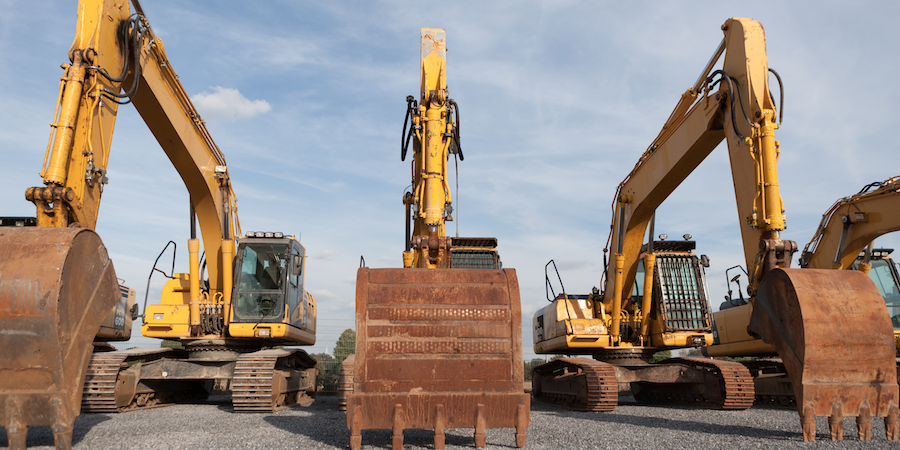The following article was written by Marek Fabric Panels Project Manager, Bill Rankin, and was originally published on MarekBros.com.In commercial construction, fabric panels systems seldom hit the radar when Fire Code compliance is considered. They usually come to light after an incident. Typically, Plan Review Departments within some major metropolitan areas focus primarily on the obvious considerations of occupancy, egress, exits, stairwells, sprinkler heads and strobes long before wall finishes and then, sometimes they are not considered or reviewed at all. The continual non-enforcement of fire ratings and testing on textiles or fabric panel systems contributes to the complacency about fire code compliance for those systems. The lack of enforcement may actually make it appear to some contractors and designers that the code is non-existent, but the code does exist.If a state, city or metropolitan area adopts the International Building Code (IBC), then wall finishes and fabric panel systems fall under Chapter 8 Section 803 for fire code compliance. Section 803.1.1 describes that “Interior wall and ceiling finish materials shall be classified in accordance with ASTM E84 or UL 723. Such Interior finish materials shall be grouped in the following classes in accordance with their flame spread and smoke developed indexes. Class A, B or C.”What is true about the IBC is that it establishes the minimum requirements, and a jurisdiction cannot subtract from a code or contend that a section of the code does not apply. A jurisdiction can only add to the code, and usually those additions create more stringent requirements than the code may already provide.
Reshaping the Construction Industry
Last month marked the end of summer. For most of us, that means no more trips to the beach or outdoor BBQs, but for many of our neighbors working construction in Texas, the falling temperatures offer desperately needed relief from brutal, and often life threatening, working conditions.Billy Tirado is a foundation repairman from Dallas. For the past 12 years, he’s worked hard to provide for his wife and three daughters, but he risks his health every time he works in the hot Texas sun. Last summer, Billy was working for a foundation repair company that forbade him from stopping for water or rest. As a result, he nearly fainted from heat exhaustion. “Your body feels like it is suffocating...I felt dizzy. My eyes got blurry. I felt nauseous.”Sadly, Billy’s experience is typical in the Texas construction industry. Because there is no state or federal law ensuring rest breaks for construction workers, many employers fail to do the right thing; nearly 40% of Texas construction workers do not receive rest breaks on the job. Workers who are denied rest breaks face higher risks of heat stroke, heat exhaustion, and even death. This summer in Dallas, an average of two workers were hospitalized due to heat-related illnesses every day.
October 08, 2014
The following article originally appeared in the October newsletter to clients of Kiley Advisors, LLC for the purpose of providing the latest leading indicators and industry issues to those clients. Reprinted with permission.The market continues to prosper in Houston. New projects are being announced each week and the market shows no signs of slowing. The Architecture Billings Index (ABI), a national leading indicator for construction still shows growth across the nation, and even stronger growth in the southern region, which includes Texas. The ABI’s project inquiries index is even higher, which suggests that the architect’s telephone is still ringing as more owners want to pursue projects across the nation.
October 07, 2014
On Monday, October 6th, the Austin Community College Board of Trustees will consider a resolution addressing wages and working conditions on future construction projects included as part of a combined $386 million bond package. Bond packages for new construction typically enjoy broad and strong support from our industry, but the Austin AGC is troubled by certain provisions that will impact the day-to-day operations of companies performing the work.What’s even more problematic is that the resolution appears to have been crafted without input from a broad range of the local construction community. This is especially puzzling when you consider that the owner in this case has the word “community” as part its official name. To be fair, ACC Trustees have a priority focus on local education, not construction, issues.
October 04, 2014
The following article was originally published on Marekbros.com.This business is just as much about the relationships we build over the decades as it is about the projects we build for our customers. Perhaps more so. After all, without those relationships, the projects for those customers would never go from concept to reality.Each year at Marek, we pay tribute to select partnerships by honoring some of the most trusted and respected companies in construction. We host an annual dinner where we have, for years, honored a Supplier of the Year and a General Contractor of the Year. In 2014, we’ve added something new: An Architect of the Year.
October 02, 2014
Texas is an economic engine unlike any other, but there are things that could put the brakes on our dynamic growth. Congested highways and the unreasonably long commutes that go along with them have the potential to slow commerce in a way that promises to be detrimental to the Texas economic experience. With over 1,000 people moving here each day, we’re told to expect as many as 18 million additional vehicles on our roads by the year 2040. That’s 45 million cars and trucks.When Governor Rick Perry first took over the central office at the Texas Capitol in 2000, the state had zero debt for roads. One of Perry's enduring legacies – for better or worse – is that he embraced government debt to finance construction of highways. Now the credit card is maxed out, and voters across the ideological spectrum are opposed to more toll roads.
October 01, 2014
Some employers mistakenly believe that wage and salary information can be kept confidential. In my law practice, I occasionally see policies stating that employees may not discuss compensation with their co-workers. Such policies are illegal. The National Labor Relations Board (NLRB) takes the position that discussing compensation and benefits is “protected concerted activity” under the National Labor Relations Act. An employer who tells employees not to discuss such matters is risking an unfair labor practice charge and sanctions by the NLRB.
September 30, 2014
Cost increases widen, three surveys report; AIA finds billings rise, stalled projects reviveEditor’s note: Construction Citizen is proud to partner with AGC America to bring you AGC Chief Economist Ken Simonson's Data DIGest. Check back each week to get Ken's expert analysis of what's happening in our industry.“Current construction costs increased for the 32nd consecutive month in September,” IHS and the Procurement Executives Group (PEG) reported last Wednesday. “The headline current IHS PEG Engineering and Construction Cost Index (ECCI) registered 57.8% in September, up from 53% in August, and by a narrow margin, the highest reading since March 2013….The materials/equipment component of the ECCI strengthened to 59.0%, up 5.5 [percentage points] from August….all 12 components show[ed] higher prices, following an August reading that showed six components either neutral or falling.
September 29, 2014
The following article originally appeared in the August newsletter to clients of Kiley Advisors, LLC. Reprinted with permission.In every good company there are two functions that must occur simultaneously, but require different skill sets, and they must become integrated at the CEO and senior management team. One activity is managing what is under contract TODAY – seeing that schedules and budgets are met. There is not margin or fee fade; overhead is controlled. The other activity is doing the things that ensure that the organization will have TOMORROW – creating a clear vision of a desired future, then acquiring the resources and making the changes necessary to realize that future.
September 26, 2014
There is growing anger across the nation about the about the cancer of worker misclassification in the construction industry. Why are more and more political leaders, thought leaders, and others calling it a “scam” and saying that something needs to be done quickly to deal with these cheaters? Well, as Supreme Court Justice Louis Brandeis famously intoned: “Sunlight is the best disinfectant.” That’s the way most people know the quote. The entire quote is this: “Publicity is justly commended as a remedy for social and industrial diseases. Sunlight is said to be the best of disinfectants; electric light the most efficient policeman.”
September 25, 2014



.jpeg?itok=6uFZXEBH)





.jpeg?itok=4Vi_1nJG)


































